The Center invites HED science researchers to deliver presentations as part of our weekly seminar series for LLNL staff, postdocs, and interns.
All presentations are the work of the speakers and owned by their respective institutions. We thank the speakers for permission to post their work here. To watch featured seminars, please visit the Livermore Lab Events YouTube channel.
If you are interested in delivering a seminar, we invite you to contact Federica Coppari, seminar series chair, at coppari1 [at] llnl.gov (coppari1[at]llnl[dot]gov)
Dr. Jon Belof
Lawrence Livermore National Laboratory
One of the greatest challenges of modern science is the understanding of matter far from equilibriu...
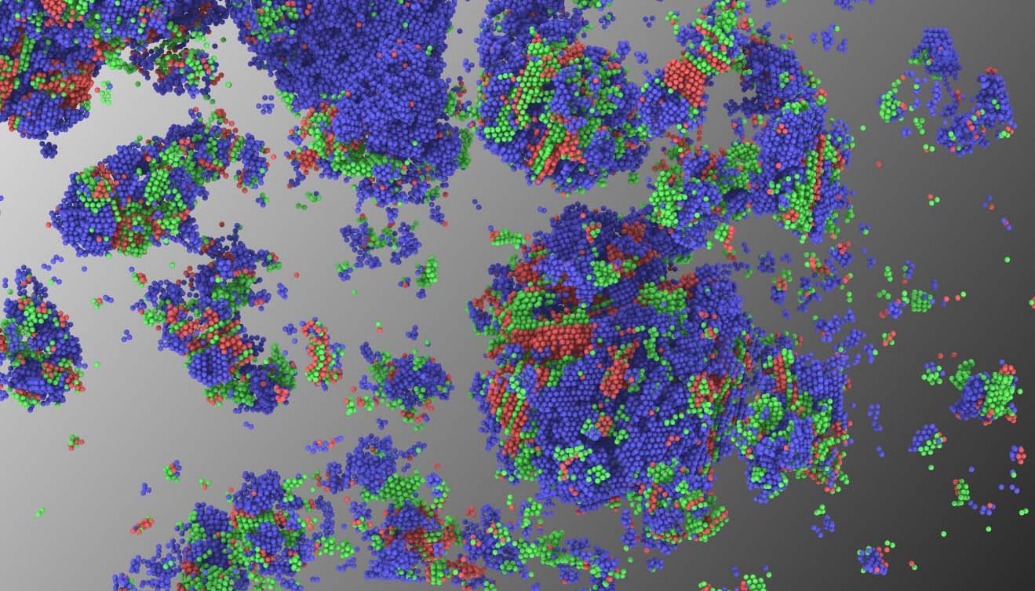
Dr. Jon Belof
Lawrence Livermore National Laboratory
One of the greatest challenges of modern science is the understanding of matter far from equilibrium. Modern techniques of applying rapid compression—via drivers that have relative timescales varying by many orders of magnitude—offer the unique possibility of manipulating kinetic pathways with the goal of generating specific configurations of matter. At LLNL we have been examining the theoretical underpinnings of transformational pathways far from equilibrium, with a focus on the nucleation and growth of potential metastable solid phases from liquid systems. Through advanced simulation techniques developed recently, we have found several interesting features of phase transitions as they occur under extreme conditions, with predictions showing that metastable phases are indeed generated along compression pathways, that they might be stabilized, and suggestions for how new x-ray sources and experimental conditions can be brought to bear on these important, fundamental questions. New scaling laws that predict the observable metastability as a function of compression rate offer possible joint theoretical and experimental investigations toward improving predictive capabilities for high energy density conditions.
Felipe Gonzalez
Project Scientist, University of California, Berkeley
PhD in Physics, Univ. de Chil
Computer simulations based on quantum mechani...
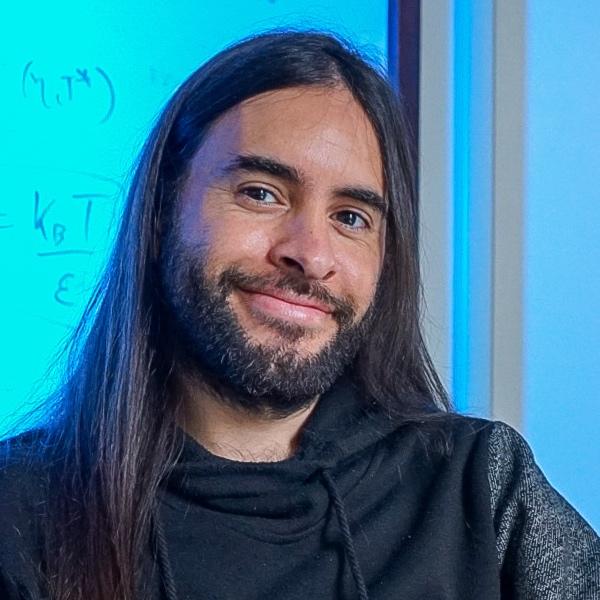
Felipe Gonzalez
Project Scientist, University of California, Berkeley
PhD in Physics, Univ. de Chil
Computer simulations based on quantum mechanics are useful because they are predictive. Approaches based on first-principles have demonstrated that the properties of matter can be predicted very accurately, even at extreme conditions of pressure and temperature present in shock or ramp compression experiments and planetary interiors. Using these techniques, we can obtain equations of state (EOS) of different materials and predict different phase transitions that can help guide experiments and to develop new theoretical models for matter at extreme conditions. Here we show how the combination of two different first-principles approaches, density functional theory molecular dynamics (DFT-MD) and path integral Monte Carlo (PIMC), enables us to develop EOS of materials that span a wide range of temperatures and densities, including warm dense matter (WDM) regime, and to obtain shock Hugoniot curves that span across the L-shell and K-shell ionization regimes. We study the nonideal mixing effects in WDM and provide a code that generates new EOS of materials. In addition, we show how DFT-MD simulations can be applied to address a number of problems relevant to planetary science, including the erosion of Jupiter’s core, miscibility of planetary materials, and crystallization of super-Earth cores.
Derek Mariscal
Lawrence Livermore National Laboratory
As lasers facilities continue to grow and advance in repetition rate capabilities (>shot per mi...
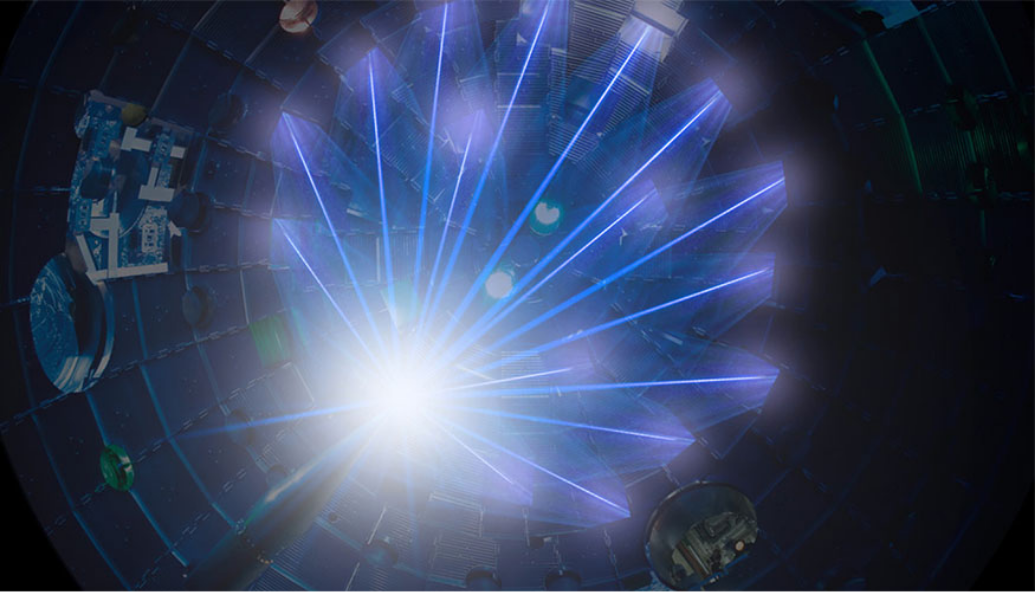
Derek Mariscal
Lawrence Livermore National Laboratory
As lasers facilities continue to grow and advance in repetition rate capabilities (>shot per minute), data generation will increase by several orders of magnitude compared to today’s premier ~shot/hour facilities. Replacing human-guided experience and intuition with AI-like systems will be necessary in simulations, driver control, and diagnostic analysis to enable utilization of next-generation laser facilities to their full potential. There are many opportunities to develop these key enabling technologies that each face unique challenges. Advances in computational hardware and machine learning technologies provide a path to operate experiments intelligently at rates of 10 Hz and beyond. This talk will outline the vision for high-repetition-rate laser-driven experimentation and overview several key areas of recent advancement that will ultimately enable acceleration of scientific discovery by several orders of magnitude.
Professor Nuno F.G. Loureiro
Department of Nuclear Science and Engineering, Department of Physics
Deputy Director, Plasma Science and Fusion Center
...
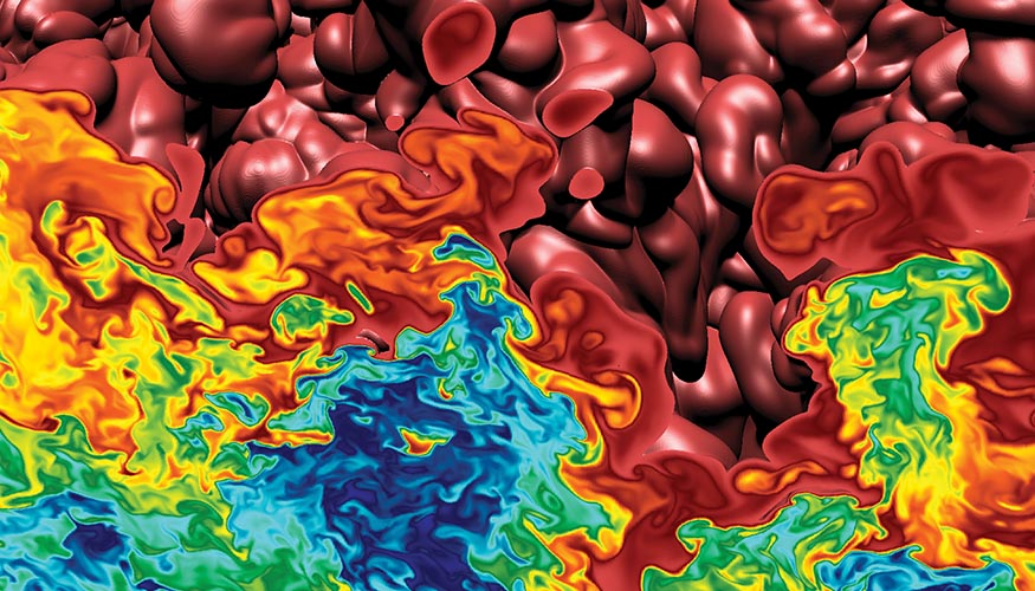
Professor Nuno F.G. Loureiro
Department of Nuclear Science and Engineering, Department of Physics
Deputy Director, Plasma Science and Fusion Center
Massachusetts Institute of Technology
Magnetic fields abound throughout the universe. Their strengths are such that they are dynamically important; and they tend to be associated with some of the most energetic phenomena that we observe. Astrophysical magnetic fields are generally believed to be created and sustained by the turbulent dynamo process, which relies on seed magnetic fields to act upon and amplify to the observed levels. Traditionally, emphasis has been placed on the Biermann battery mechanism as the originator of such seeds—this is also the case for magnetic fields in ICF-relevant contexts.
In this talk, I will discuss how configurations that trigger the Biermann battery are also unstable to the Weibel instability, provided that the plasma is weakly collisional and that there is enough scale separation between the temperature- and density-gradient scale lengths and the electron scales. Furthermore, I will argue that even something as generic as a sheared flow suffices to trigger the Weibel instability.
For sufficiently large systems, the amplitude of the Weibel fields far exceeds that of the Biermann fields; however, Weibel fields are at electron scales, whereas Biermann fields are system size. These findings thus suggest a different generation and amplification paradigm: one where Weibel fields are the dominant seed fields, and first undergo several generations of mergers until they reach scale lengths where they can be efficiently amplified by turbulent flows.
Professor Youichi Sakawa
Institute of Laser Engineering, Osaka University
Collision less shock is a shock wave generated in a collision less plasma, in ...
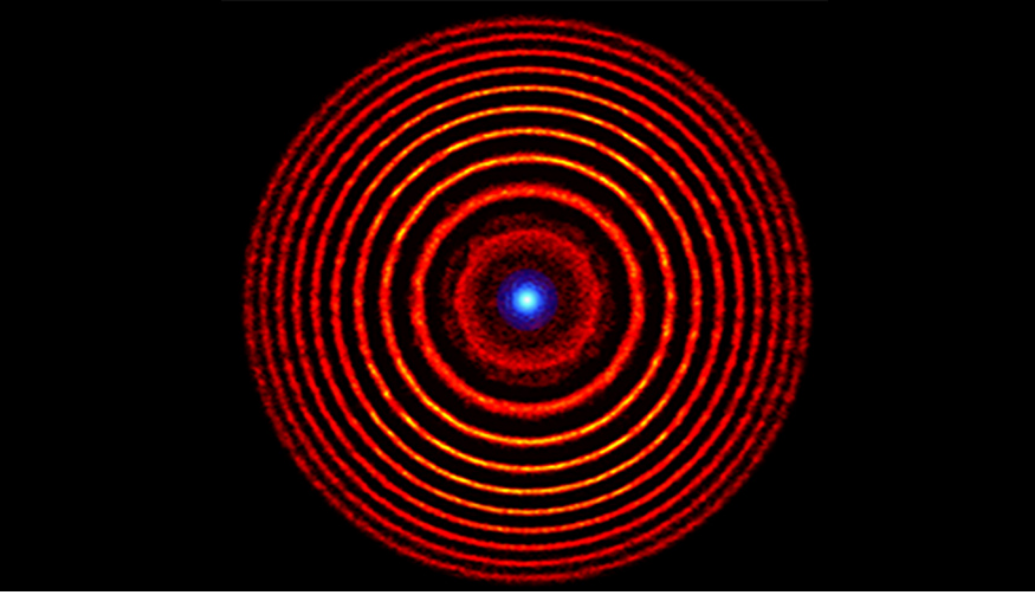
Professor Youichi Sakawa
Institute of Laser Engineering, Osaka University
Collision less shock is a shock wave generated in a collision less plasma, in which Coulomb collisions are negligible. Wave–particle interactions and collective effects of electric and magnetic fields play essential roles in shock formation. Collision less shock is ubiquitous in space and astrophysical plasmas. In general, we can distinguish collision less shock into three categories: magnetized shock, electromagnetic turbulence sustaining shock (EM shock), and electrostatic shock (ES shock). Magnetized shock is ubiquitous in space and astrophysical plasmas. EM shock is predicted to be mediated by a self-generated turbulent electromagnetic field. The Weibel instability is a leading candidate for the generation mechanism of turbulent electromagnetic fields and shocks. ES shock is rare in the Universe. It may occur even with an external magnetic field under special conditions, such as in the auroral zones, but here we focus only on the cases without an external magnetic field. We present experimental achievements in these three types of collision less shock using high-energy lasers.
Dr. Richard Kraus
Lawrence Livermore National Laboratory
The discovery of over 4500 extra-solar planets has created a need for modelling their interior ...

Dr. Richard Kraus
Lawrence Livermore National Laboratory
The discovery of over 4500 extra-solar planets has created a need for modelling their interior structure and dynamics. The prominence of iron in planetary interiors requires accurate and precise physical properties at extreme pressure and temperature. A first-order property of iron is the melting point, which is still debated for the conditions of Earth’s interior. We used high-energy lasers at the National Ignition Facility and in-situ x-ray diffraction to determine the melting point of iron up to 1000 GPa, three times the pressure of Earth’s inner core. We used our observation to determine the length of dynamo action during core solidification to the hexagonal close-packed structure. We find that terrestrial exoplanets with four to six times Earth’s mass have the longest dynamos, which provide important shielding against cosmic radiation.
François Soubiran
CEA DAM-DIF
Research on planets and stars is very vivid with numerous dedicated observational campaigns. For instance, the transit det...

François Soubiran
CEA DAM-DIF
Research on planets and stars is very vivid with numerous dedicated observational campaigns. For instance, the transit detection method led to exquisite discoveries in the field of exoplanet, triggering some important paradigm shifts in our conception of planetary systems. But these observational data rely on the accurate determination of their stellar companion properties. In order to comprehend the structure, evolution and formation of the different compact objects it is crucial to understand the microphysics at play. With the advent of significantly improved computer capabilities and new numerical techniques, ab initio simulations proved to be an important asset in this area. They provide precise determinations of the physical properties of materials relevant for planets and stars on a wide range of thermodynamic conditions and effectively complement the experimental results. In this presentation I will give a few examples of the capabilities of such simulations at the atomic scale. I will also explain how the microphysics can provide strong constraints on the global properties of stars and of planets, and on the habitability of exoplanets.
Professor Tobias Dornheim
Center for Advanced Systems Understanding (CASUS), D-02826 Görlitz, Germany
Helmholtz-Zentrum Dresden-Rossendorf (HZDR), D-01328 ...
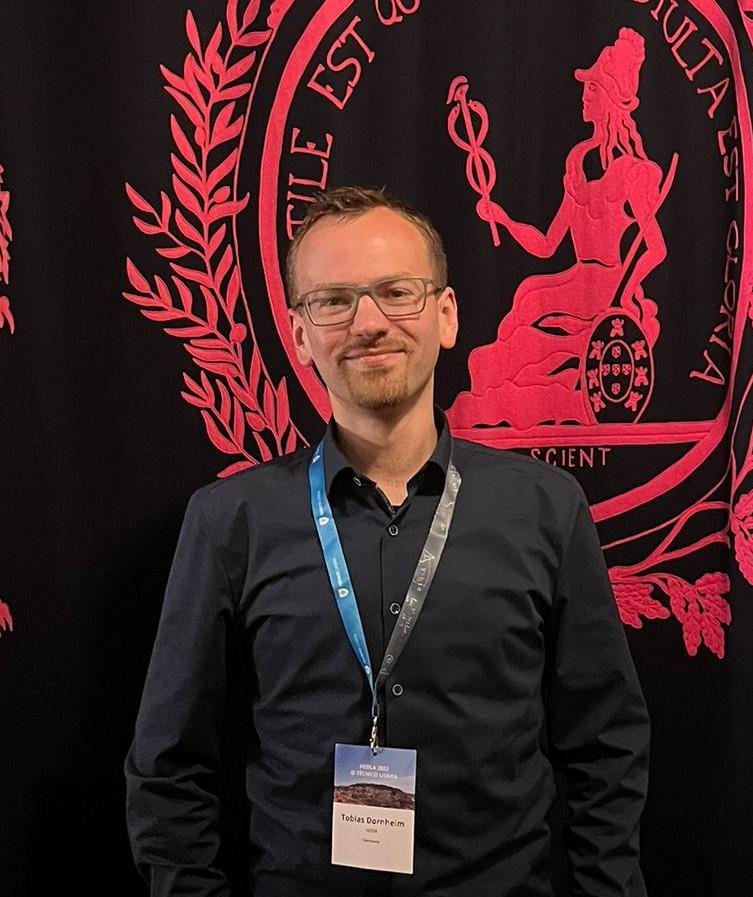
Professor Tobias Dornheim
Center for Advanced Systems Understanding (CASUS), D-02826 Görlitz, Germany
Helmholtz-Zentrum Dresden-Rossendorf (HZDR), D-01328 Dresden, Germany
Warm dense matter (WDM)—an extreme state that is characterized by extreme densities and temperatures—has emerged as one of the most active frontiers in plasma physics and material science. In nature, WDM occurs in astrophysical objects such as giant planet interiors and brown dwarfs. In addition, WDM is highly important for cutting-edge technological applications such as inertial confinement fusion and the discovery of novel materials. In the laboratory, WDM is studied experimentally in large facilities around the globe, and new techniques have facilitated unprecedented insights into exciting phenomena like the formation of nanodiamonds at planetary interior conditions. Yet, the interpretation of these experiments requires a reliable diagnostics based on accurate theoretical modeling, which is a notoriously difficult task. In this talk, I give an overview of recent developments in this field, which will allow for the first time to rigorously treat the intricate interplay of Coulomb coupling with thermal excitations and quantum degeneracy effects. Moreover, I show how quantum Monte Carlo simulation techniques will help to decisively improve density functional theory (DFT) simulations of WDM, thereby opening up new perspectives, such as the experimental and theoretical study of nonlinear effects. Finally, I will present a new idea to extract the exact temperature from an X-ray Thomson scattering experiment without any models or simulations.
Professor Christopher Ridgers
University of York, UK
Inertial confinement fusion involves the creation of plasmas far from local thermodynamic equilibri...

Professor Christopher Ridgers
University of York, UK
Inertial confinement fusion involves the creation of plasmas far from local thermodynamic equilibrium. The temperature scale-length in the plasma can become shorter than the collisional mean free path of the heat-carrying electrons and thus the thermal transport can therefore become nonlocal. How to capture this in our modelling tools is a long-standing problem in the field. Nonlocal transport was identified as one cause of discrepancies between LASNEX modelling and the National Ignition Campaign. The most common way to capture nonlocal transport is to continue using a diffusive, LTE model, but to limit the heat flux to prevent it becoming unphysical. This flux limiter can only be tuned post-hoc to match experiments and therefore its use limits the predictive capability of codes. Non-LTE thermal transport models should do a better job of capturing nonlocal transport but also necessarily make several assumptions. Here we present recent work to assess the accuracy of various models for nonlocal transport, using both ab-initio calculations and simplified experiments. We find that nonlocal modes can be accurate to within ~10% over a relatively wide range of parameters in the absence of magnetic fields. Self-generated magnetic fields substantially complicate this picture though and we will present a simplified experimental platform for investigating the effects of magnetic field, for example directly measuring the advection of magnetic field by the heat flow (the Nernst effect) in a plasma for the first time.
Professor Erin R. Johnson
Department of Chemistry
Dalhousie University, Canada
The development of dispersion corrections has allowed the applicat...
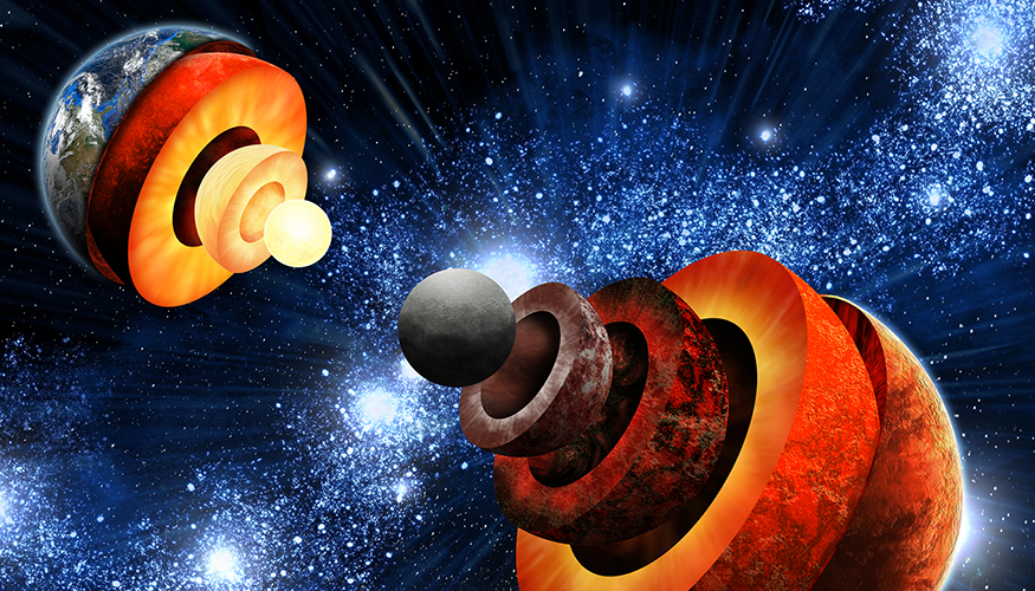
Professor Erin R. Johnson
Department of Chemistry
Dalhousie University, Canada
The development of dispersion corrections has allowed the application of density-functional theory (DFT) to a wide range of problems in materials science. One such problem is molecular crystal structure prediction (CSP) of a given compound from its molecular diagram. CSP requires accurate and efficient evaluation of energy differences between candidate structures to determine the most thermodynamical stable form(s), which should be seen experimentally. Identification of likely crystal structures further allows prediction of emergent properties, such as charge transport and photoluminescence. Another example where the advent of dispersion corrections was an essential advance is the study of layered materials, such as graphene and transition-metal dichalcogenides (TMDCs). The 2D electrides are a particularly novel class of layered materials, in which the positively charged atomic layers are separated by interstitial regions of confined electrons. In this talk, I will highlight recent applications of DFT to molecular crystal structure prediction, with a focus on helicene compounds, which have potential utility as organic electronics. I will also present a study of electride materials and their insertion at metal-TMDC interfaces to improve charge transport. Finally, I will discuss the implementation of our exchange-hole dipole moment (XDM) dispersion model into the FHI-aims code to enable computational modeling of much larger systems than was previously feasible.
Dr. Frank Graziani
Lawrence Livermore National Laboratory
HEDS Center Director
The High Energy Density Science Center (HEDSC) was established in ...

Dr. Frank Graziani
Lawrence Livermore National Laboratory
HEDS Center Director
The High Energy Density Science Center (HEDSC) was established in late 2015 through a joint agreement between the Physical and Life Sciences, Weapons and Complex Integration, and NIF and Photon Science directorates. The Center’s goal is to build a high energy density community through support of, and collaboration with, academic partners and to integrate those efforts with the programs at LLNL. The Center is built around four focus areas: (1) education, (2) outreach through workshops and seminars, (3) workforce pipeline to the programs, and (4) enabling research collaborations between LLNL and academic partners. In this talk, we will present the year FY22 in review and look at what lies ahead in FY23. FY22 saw a collaboration with the WCI Designer Training Program as we offered a survey class in HEDS to staff and students. The Center was also involved in running the Scientific Applications of Quantum Computing Summer school. Another new HEDS Center Fellow was selected, and we will begin the process for selecting our 2023 HEDS Fellow. Besides educating the next generation of HED scientists, the HEDS Center continues training students through internships and thesis opportunities. Our outreach and collaboration activities continue through a vibrant seminar series, university partnerships, a sabbatical program. We welcomed Professor Farhat Beg from UCSD and Franck Delmotte from the University of Paris for sabbatical visits. With the return to on-site work, our seminar series went into a new hybrid mode, thereby serving both the LLNL community and our external partners. Inclusion and diversity are an important aspect of our mission and the Consortium for HEDS (FAMU, UC Merced, Morehouse and LLNL) helps a number of students within CfHEDS. The Consortium’s goal is to provide research and education opportunities in HEDS for under-represented groups and thereby increase diversity in the field. A call for a new HEDS Fellow postdoc position is out and working with UCSD, a course in atomic spectroscopy is planned for the spring quarter of 2023. In FY23 we will continue to foster international collaborations in HEDS, re-engaging with Israel and Japan. We will plan to utilize the recently dedicated University of California Livermore Collaboration Center along with the Livermore Valley Open Campus for workshops and distance learning. Finally, the process for strategic planning will begin in 2023.
Professor Yasuhiro Kuramitsu
Graduate School of Engineering, Osaka University
Energetic charged particles or cosmic rays are ubiquitous in the Universe,...

Professor Yasuhiro Kuramitsu
Graduate School of Engineering, Osaka University
Energetic charged particles or cosmic rays are ubiquitous in the Universe, and the origins of cosmic rays have been a long standing open problem more than a century. We have been tackled this using intense lasers in laboratories. In this talk our recent efforts on the experimental investigations of relativistic electron and ion acceleration will be presented. We discuss the nonthermal particle acceleration and the universality of the power law energy spectra of accelerated particles in space and astrophysical contexts and also in laboratories.
Dr. Ronnie Shepherd
Lawrence Livermore National Laboratory
The properties of high energy-density(HED) matter are central to understanding fields such as...

Dr. Ronnie Shepherd
Lawrence Livermore National Laboratory
The properties of high energy-density(HED) matter are central to understanding fields such as stellar evolution, astrophysics, and thermonuclear fusion. Historically, comparing analytic models of HED matter to experimental results have been hampered by spatial and temporal gradients. Ultrashort pulse lasers can heat matter on a time-scale short compared to hydrodynamic expansion times, resulting in a minimal spatial gradient, high temperature, high density plasma for short durations. Additionally, the development of high time resolution diagnostics allows the study of HED matter with minimal spatial and temporal gradients.
We present three experiments that demonstrate the unique capabilities of short pulse lasers to study fundamental properties of HED matter. The first experiment demonstrates a different approach to benchmarking absorption (or opacity) properties of HED matter by measuring emissivity. These experiments are being performed at the Orion laser (~700 fs, 100 J, 5320 nm) facility at the Atomic Weapons Establishment (AWE) in England. The second experiment (also performed at Orion) provides data to study ionization as plasma density increases (pressure ionization or ionization potential depression). The third, and most recent, experiment was performed at the ALEPH laser (45 fs, 8J, 400 nm) at Colorado State University. This experiment takes advantage of ion micro-fields and spectral line shapes to infer the electron-ion equilibration in HED matter. The philosophy of the measurements, data, and current state of analysis will be presented.
Patrick Knapp
Sandia National Laboratory
The Z machine is the world’s largest pulsed power accelerator where we conduct experiments to study matter in t...

Patrick Knapp
Sandia National Laboratory
The Z machine is the world’s largest pulsed power accelerator where we conduct experiments to study matter in the most extreme states accessible on earth. Results from these experiments are used to advance our understanding of physics in nuclear explosions, nuclear survivability, astrophysics, and planetary cores. These experiments are expensive and rare, necessitating that we utilize all experimental data to the fullest extent possible. In this talk, we will detail our vision for developing and applying the modern data analytics tools that enable efficient and effective use of our data to constrain models and to advance high energy density science and the pursuit of high fusion yield in the laboratory. Statistical inference lies at the heart of many critical tasks, such as feature extraction, hypothesis testing, and parameter estimation. We detail the use of Bayesian methods to constrain experimental quantities of interest by combining disparate sources of data, using examples from fusion experiments on Z. We also discuss the development and application of machine-learned surrogate models that enable expensive analysis methods like Bayesian inference. Combining high fidelity, efficient surrogate models with Bayesian inference opens new opportunities to optimize our experiments and instruments to maximize information gain, providing a quantitative means to guide investments and make decisions in a resource constrained environment. These tools can revolutionize the practice and use science of two impact key decisions.
Bob Heeter
Lawrence Livermore National Laboratory
Opacity in a plasma is the material property characterizing X-ray absorption, a key coupling parameter...
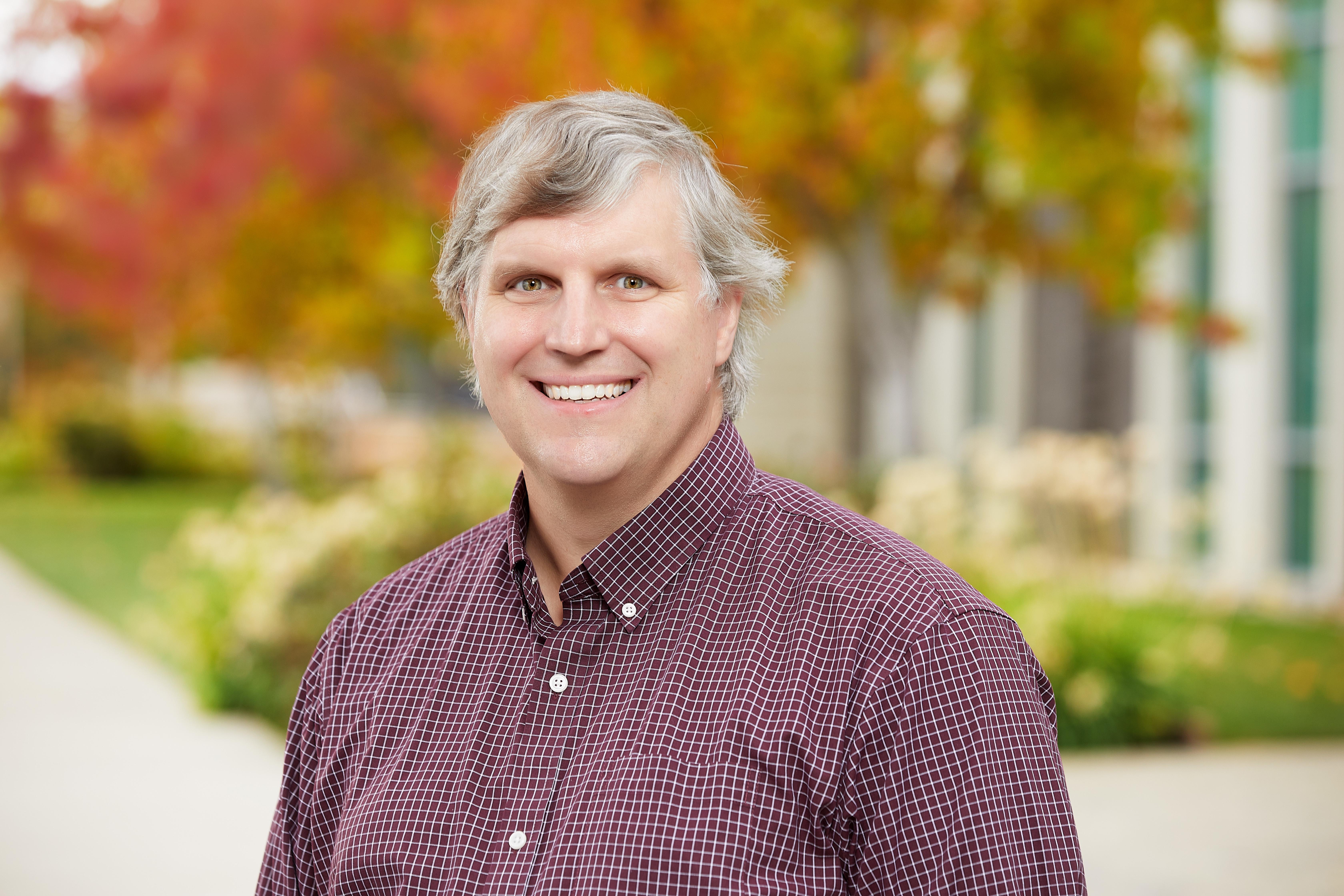
Bob Heeter
Lawrence Livermore National Laboratory
Opacity in a plasma is the material property characterizing X-ray absorption, a key coupling parameter between the “rad” and the “hydro” in radiation-hydrodynamic models. Opacity experiments on Z show significant disagreements with theory at temperatures > 160 eV and electron densities > 2x1022/cm3. A higher opacity at these conditions would help resolve longstanding issues with the solar convective zone boundary and the ages of white dwarf stars. However, it has proven very difficult to reconcile theory with the Z data. This motivated development of comparable opacity experiments on the National Ignition Facility (NIF). The Opacity-on-NIF Campaign has begun producing data for X-ray energies 1000‒2000 eV at temperatures 130‒160 eV and electron densities 0.5 to >3x1022/cm3. Measurements at higher temperatures are currently precluded by the onset of high backgrounds. Preliminary transmission measurements for iron and oxygen, at conditions overlapping some of the Z measurements, show trends qualitatively similar to the Z data, but are not final. Quantification and correction of a potential systematic error sources is underway, and peer review in this area is invaluable to improving the accuracy. Ongoing work includes development of a time-gated spectrometer, together with target improvements, to reduce backgrounds, improve spectral resolution, and enable measurements at higher temperatures.
Robert Littlejohn
University of California, Berkeley
The physics of polyatomic molecules involves two distinct gauge theories. One is associated with th...
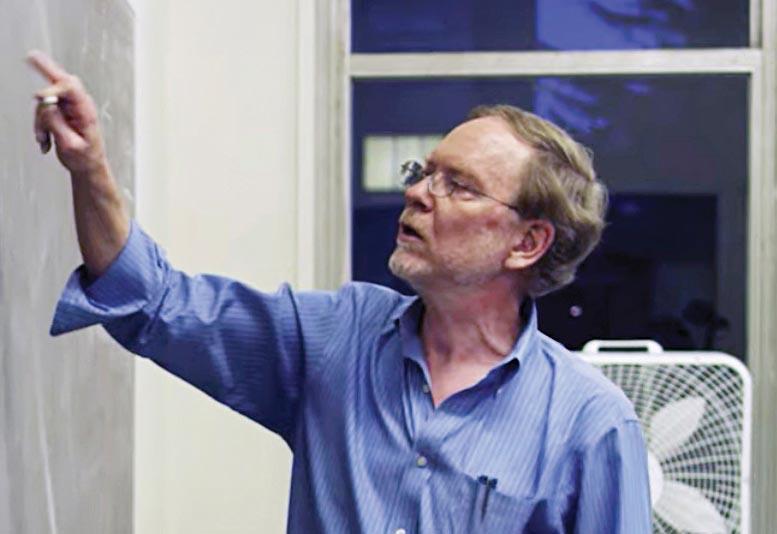
Robert Littlejohn
University of California, Berkeley
The physics of polyatomic molecules involves two distinct gauge theories. One is associated with the rotational invariance of the molecule, which endows the nuclear configuration space with the geometrical structure of an SO(3) fiber bundle. This geometry provides the structure within which such issues as the conservation of angular momentum, the construction of nuclear kinetic energy operators, the phase and frame conventions for electronic eigenstates, the construction of diabatic bases, and the geometry of molecular point symmetries are framed. We call this the Coriolis gauge structure; it is associated with a vector potential and a curvature form that play an important role in the physics of the molecule. The second gauge theory is associated with the phase and frame conventions of the electronic eigenstates, which are associated with the Mead-Truhlar-Berry or MTB connection or vector potential and curvature. This gauge structure has its own fiber bundle, which consists of frames of electronic basis states. The MTB vector potential appears in the nuclear kinetic energy as derivative couplings. This talk will discuss the interplay between these two gauge theories and the role that they play in fundamental aspects of molecular physics.
Michael MacDonald
Lawrence Livermore National Laboratory
Electron temperature is a fundamental parameter in plasma physics, affecting many important pla...
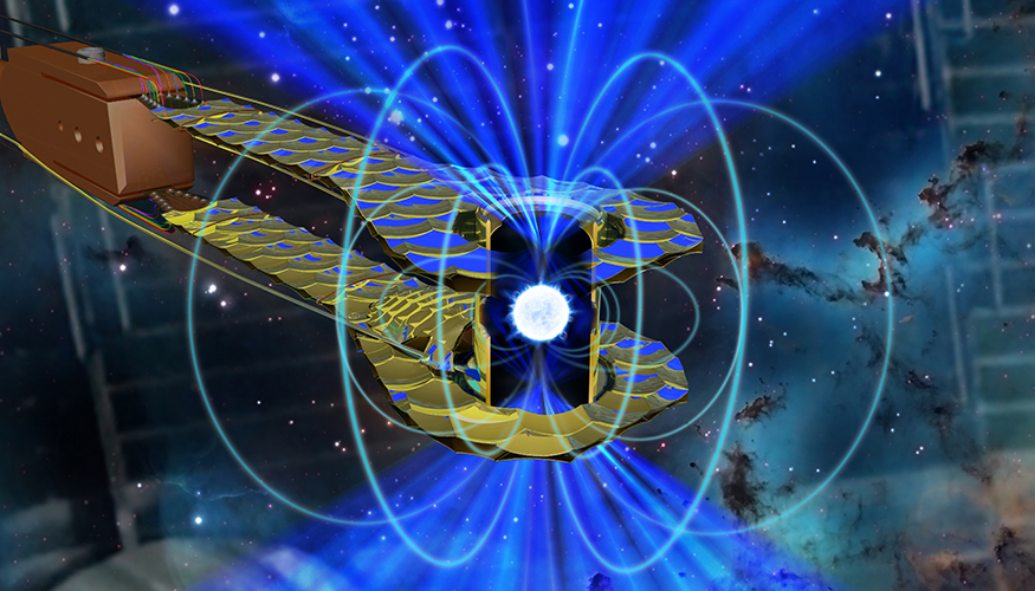
Michael MacDonald
Lawrence Livermore National Laboratory
Electron temperature is a fundamental parameter in plasma physics, affecting many important plasma properties such as ionization, heat transport, and compressibility. Despite its importance, temperature data from experimental measurements in the high energy density (HED) and warm dense matter regime are sparse due to the limited number of diagnostic techniques available for temperatures in the 10s of eV temperature range. This temperature range is particularly difficult to measure in dense plasmas or in experimental geometries with large volumes (e.g. hydrodynamics experiments) due to the fact that the photon energies required for x-ray emission and absorption spectroscopy scale with temperature and x-ray scattering measurements require uniform plasma conditions. To address this need, we are developing x-ray fluorescence spectroscopy (XFS) as a temperature diagnostic for HED plasmas. XFS interrogates the plasma with an external energy source (typically x-rays or electrons) to fluoresce specific ions in a plasma to determine the ionization state distribution, and in turn the plasma temperature. We will present results demonstrating the use of XFS to determine the temperature of shocked foams and initial results from the Gbar platform at the National Ignition Facility.
Professor Shinsuke Fujioka
Institute of Laser Engineering at Osaka University
Ablative RT instability growth was investigated to elucidate the fundament...

Professor Shinsuke Fujioka
Institute of Laser Engineering at Osaka University
Ablative RT instability growth was investigated to elucidate the fundamental physics of thermal conduction suppression in a magnetic field. Experiments found that unstable modulation growth is faster in an external magnetic field. This result is reproduced by a magnetohydrodynamic simulation based on a Babinskii model of electron thermal transport. An external magnetic field reduces the electron thermal conduction across the magnetic field lines because the Larmor radius of the thermal electrons in the field is much shorter than the temperature scale length. Thermal conduction suppression leads to spatially nonuniform pressure and reduced thermal ablative stabilization, increasing the growth of ablative RT instability. We also determine that the strength of the magnetic field can affect the ablative RT instability. The stronger the magnetic field, the higher the modes of RT growth affected. In other words, by reducing the thermal transport at the instability growth front, the magnetization allows higher modes of RT instability to grow.
Daniel Jontof-Hutter
University of the Pacific
Low mass planets have an extraordinary range in bulk compositions, from primarily rocky worlds to those w...
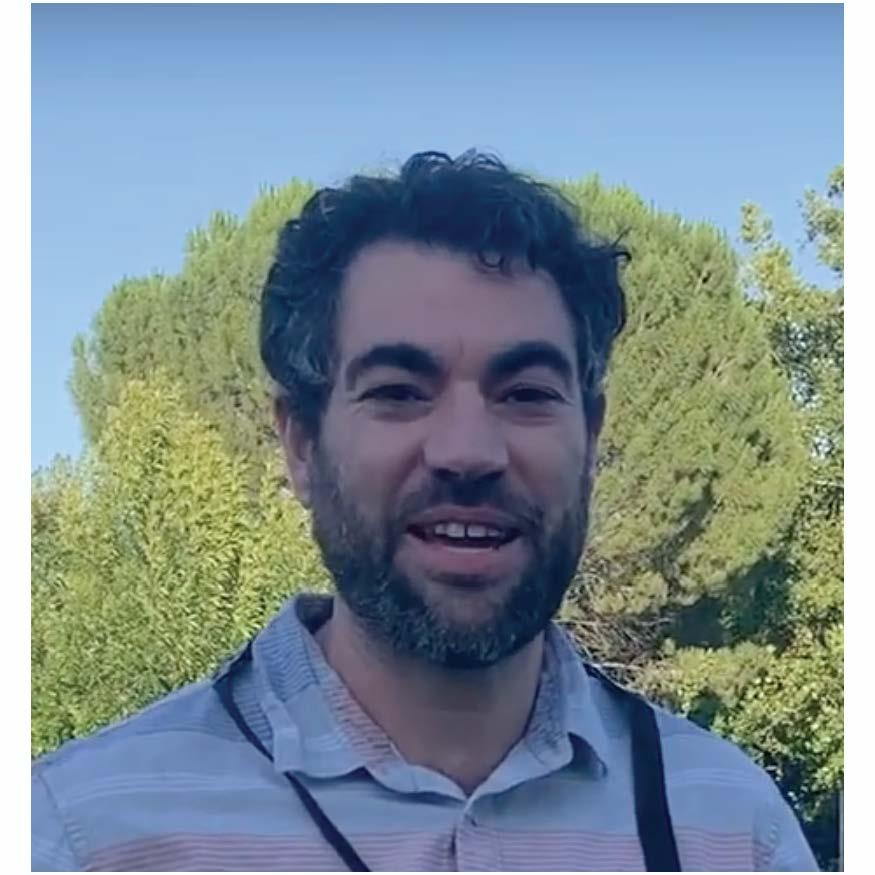
Daniel Jontof-Hutter
University of the Pacific
Low mass planets have an extraordinary range in bulk compositions, from primarily rocky worlds to those with deep gaseous atmospheres. As techniques to measure precise masses advance the field of exoplanets towards the regime of rocky worlds, from ultra-short orbital periods to Venus-like distances, we identify bounds on planet compositions from size and incident flux.
We also highlight the complementary datasets of radial velocity spectroscopy and transit timing variations and how their different detection biases affect our interpretation of the planetary mass-radius diagram. We summarize the existing challenges of both techniques and where progress reveals an emerging picture that explains some aspects of the compositional diversity of low-mass planets.
In some cases, planetary mass and radius measurements are approaching precisions where theoretical uncertainties in planet models are the limiting factor in characterizing the bulk composition. Precise masses of exoplanets discovered by the TESS mission, and advances in the equation of state in the high pressure regime, are enabling more precise exoplanet characterizations than ever before in the rocky regime.
Kalpani Werellapatha
Lawrence Livermore National Laboratory
We present details of an experimental platform that collects time-resolved x-ray diffraction...
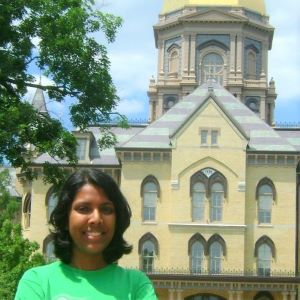
Kalpani Werellapatha
Lawrence Livermore National Laboratory
We present details of an experimental platform that collects time-resolved x-ray diffraction (XRDt) data from laser-driven dynamically compressed materials at the National Ignition Facility. XRDt probes the atomic structure of phase transformations at extreme thermodynamic conditions in-situ. To record these phase transitions, we use high speed (~1 ns) gated hybridized CMOS sensors, which collect multiple frames of data over a timescale of a few to tens of ns. We record both time-resolved (hCMOS) and time-integrated (image plate) XRD data and register the direct x-ray beam information. The drive-laser intensity is gradually increased to ramp compress thin samples, sandwiched between tamper layers. A pinhole limits the sample size to 400 µm. High-precision velocimetry measurements monitor the pressure history of the sample. A temporally uniform, quasi monochromatic x-ray source of ~10 ns duration is produced by irradiating a ~250 µm thick Ge foil with < ~50 kJ of laser energy at an intended intensity of 2x1015 W/cm2 . The x-ray source time evolution is monitored with a NIF X-ray spectrometer. We use dedicated filters to mitigate x-ray florescence and hard x-rays from hot electrons. The platform has been used to collect XRD from ambient Sn and Pb at 1 Mbar. We discuss challenges with background mitigation strategies and accuracy/resolution of diffraction data.
Dr. Toshiki Tajima
Department of Physics and Astronomy
University of California, Irvine
Laser wakefield acceleration (LWFA) is capable of acceler...

Dr. Toshiki Tajima
Department of Physics and Astronomy
University of California, Irvine
Laser wakefield acceleration (LWFA) is capable of accelerating electrons over a compact distance. The recent development of the high density (HD) regime of LWFA allows the relatively low energy electron acceleration over a microscopic distance with higher efficiency. This HD-LWFA introduces new operations and opportunities of radiotherapy by electrons. With one such operations we may take a radiotherapy using the endoscope (LWFA via a fiber laser at its tip, for example), in which a surgeon may look at tissues via endoscope and zap electrons in front of its target inside a patient body. Because of the HD-LWFA (using nanotubes as its critical density target) is so tiny (and also more efficient) than the regular gaseous LWFA, its structure may fit such a tiny confine (and all solid state) operation. The concept of operating efficient laser acceleration near the critical density also applies to laser ion accelerator.
Dr. Mamiko Nishiuchi
Institute of Laser Engineering at Osaka University
Motivated by the development of next-generation heavy ion accelerators, we have ...

Dr. Mamiko Nishiuchi
Institute of Laser Engineering at Osaka University
Motivated by the development of next-generation heavy ion accelerators, we have been searching for the efficient ion acceleration scheme by using short-pulse high intensity laser systems. Different from the light ion acceleration, heavy ion acceleration is more difficult because of an additional parameter to be controlled, ionization. Higher the ionization state, higher the acceleration efficiency. However, it is challenging to highly ionize heavy metals, such as gold or silver, as inner shell electrons are bounded in deep potential wells, i.e., a silver atom has an ionization potential Ip > 5 keV for its L-shell and ∼30 keV for its K-shell. The total ionization potential density of solid silver is Pion ∼ 1.3 peta-Pascal (PPa). A petawatt-class laser focused to an intensity I = 1021 W/cm2 has an energy density of 33 PPa. If we use petawatt-class laser light as a tool, we can in principle produce highly ionized heavy metal plasmas. We, therefore, used temporally controlled high intensity laser pulse from J-KAREN laser-system at KPSI in Japan, experimentally demonstrated generation of highly charged silver ions (Z∗ = 45±2) with energies of >20MeV/nucleon (>2.2 GeV) from submicron silver targets driven by a laser with intensity 5 × 1021W/cm2. By investigating the detail hybrid simulation which reproduced the experiments well, the dominating ionization mechanism for producing highly charged energetic silver ions is clarified to be electron collisional ionization in the ~ 10 KeV high density silver plasma.
Simon Blouin
University of Victoria, BC Canada
Stars can freeze. When a white dwarf—a dense stellar ember that simply cools down for the rest of time—be...
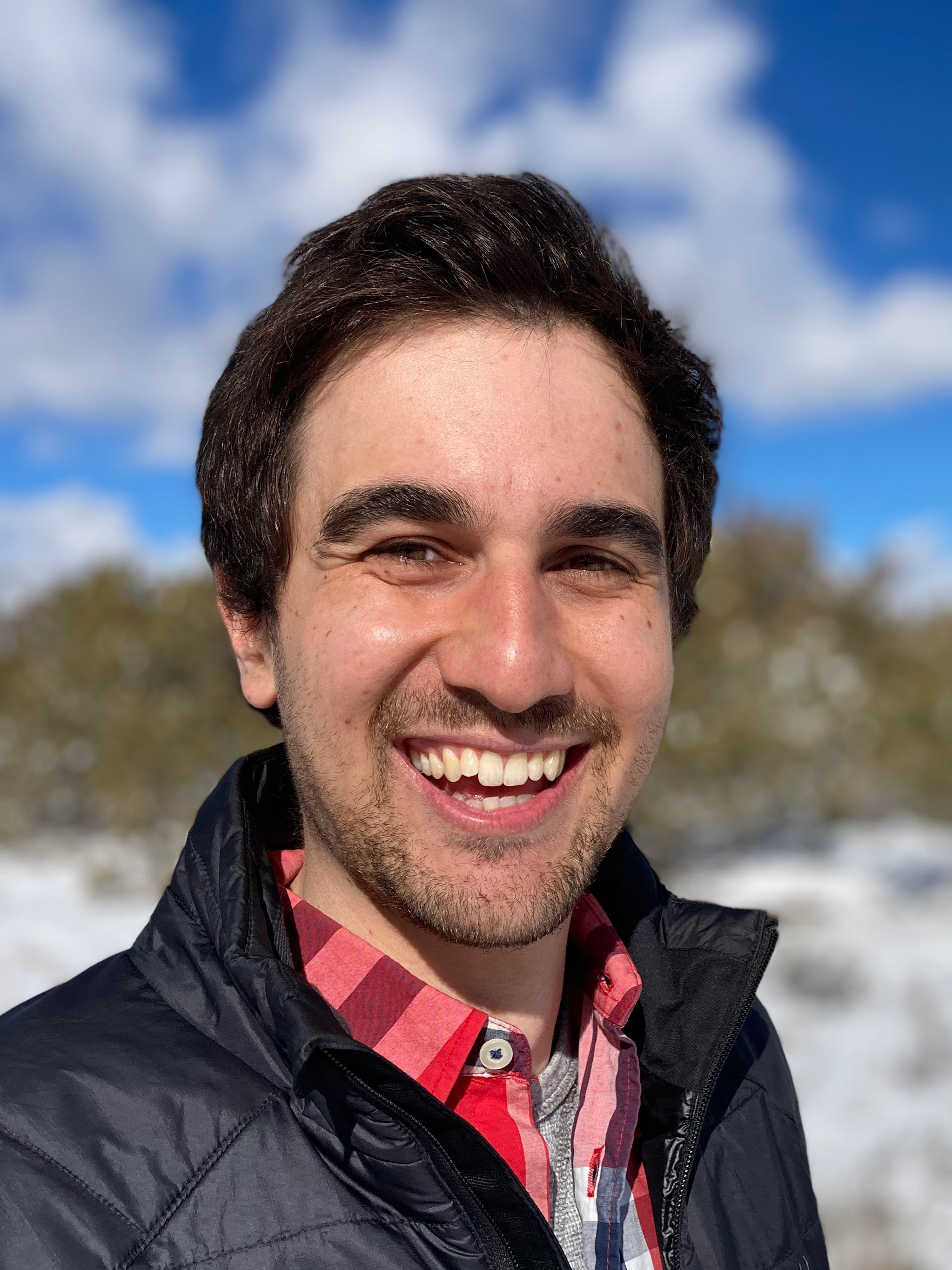
Simon Blouin
University of Victoria, BC Canada
Stars can freeze. When a white dwarf—a dense stellar ember that simply cools down for the rest of time—becomes cool enough, the ions in the degenerate plasma that makes up its core crystallize. During this phase transition, the coexisting liquid and solid ionic mixtures do not have the same composition. This chemical fractionation can release enough gravitational energy to slow down the cooling of the white dwarf for a few billion years. Recent astronomical observations have now identified the signature of this cooling delay and it is much larger than expected, reaching up to 8 billion years. I will discuss how the fractionation and “distillation” of trace amounts of neutron-rich species can solve this observational puzzle.
Amy Jenei
Lawrence Livermore National Laboratory
The crystal struc...

Amy Jenei
Lawrence Livermore National Laboratory
The crystal structure of a material is an important fundamental basis for understanding its equation of state and properties. The structure at terapascal pressures has an impact on our understanding of exoplanet interiors, and measurements at these conditions are important more broadly, for testing the accuracy of our theoretical tools for predicting material properties at the conditions of relevance for HED and ICF research. We have developed the TARDIS x-ray diffraction diagnostic at the NIF laser facility for measuring structure at these extremes. I will summarize the current status of the diagnostic and present results on two very different materials—carbon and magnesium—collected under the NIF Discovery Science Program. In the case of carbon, we have compressed it in the diamond phase to 2 TPa using ramp-shaped laser pulses and observed it to retain its ambient crystal structure far beyond the predicted regime of stability. The results reveal an inconsistency in our understanding of diamond and suggest some interesting outstanding questions to investigate. In the case of Mg we observed three phase transformations as it is ramp-compressed to 1.3 TPa, broadly consistent with theoretical predictions but also revealing some unexpected new properties.
Dr. Scott Wilks
Lawrence Livermore National Laboratory
The development of Petawatt-class short pulse laser technology has made it possible to create som...

Dr. Scott Wilks
Lawrence Livermore National Laboratory
The development of Petawatt-class short pulse laser technology has made it possible to create some of the brightest sources of particles and photons on the planet, albeit at low average power. These high peak power lasers enable sub-nanosecond photon, proton, and neutron radiographic snapshots of dense solids and plasmas, as well as their associated electric and magnetic fields, with near-micron spatial resolution, with the additional ability to create high energy density plasmas via isochoric heating. In this seminar, we show how two specific laser developments are influencing how we think about relativistic laser plasma interactions. First, we discuss how the development of kilojoule class “long” short pulses (from 1 to 20 ps in duration) with large spots (~ 50 micron) made us rethink some of the fundamental electron acceleration mechanisms that underlie short pulse laser matter interactions, and how this is helping us improve these radiographic sources for HED experiments. Next, we will see how the development of new “short” (from 100 fs to 1 ps) pulse lasers with high average powers as high as 300 kW are forcing us to examine the impact of laser wavelength on our current radiographic sources, while at the same time opening the door to completely new applications that are currently exclusively handled by high average power particle accelerators. These new applications include novel methods for measuring nuclear cross sections, nuclear waste transmutation, and short pulse-based ignition methods for Inertial Confinement Fusion.
Professor Masahiro Hoshino
School of Science, The University of Tokyo
Magnetic reconnection is a ubiquitous process not only in non-relativistic plasmas...

Professor Masahiro Hoshino
School of Science, The University of Tokyo
Magnetic reconnection is a ubiquitous process not only in non-relativistic plasmas such as solar flares and tokamak discharge disruptions, but also in relativistic plasmas such as pulsars and black hole magnetospheres, and it has become necessary to understand the physics of reconnection from non-relativistic to relativistic plasmas seamlessly. In this context, it is desired to realize relativistic reconnection in the laboratory, as a laser plasma experiment is expected to access a relativistic reconnection regime by producing strong magnetic fields. In this talk, we focus on the energy partition between thermal and nonthermal particles as an interdisciplinary research topic of reconnection. We investigated both non-relativistic and relativistic magnetic reconnections by using PIC simulation for a pair plasma and found that the production of the nonthermal particle becomes efficient with increasing the Alfven speed. While the thermal energy density dominates for the non-relativistic reconnection, the nonthermal energy density becomes over 95% of the total internal energy in the downstream exhaust for the relativistic reconnection.
Ivan Oleynik
University of South Florida
Carbon at extreme pressures and temperatures is a topic of great scientific interest for several disciplines in...

Ivan Oleynik
University of South Florida
Carbon at extreme pressures and temperatures is a topic of great scientific interest for several disciplines including planetary science and inertial confinement fusion research. Questions which has long perplexed both experimental and theoretical communities are the existence and potential synthesis of high-pressure post-diamond carbon phases and inelastic response of diamond to strong shock compression. In particular, very recent X-ray diffraction experiments at National Ignition Facility challenged the theoretical prediction of existence of a high pressure BC8 post diamond phase by compressing diamond to gigantic pressures up to 20 Mbar (Lazicki et al, Nature (2021)). By developing machine learning description of interatomic interactions and efficiently applying in quantum-accurate, billion atom molecular dynamics (MD) simulations on pre-exascale 200-petaflop Summit supercomputer, we were able to “computationally synthesize” the long sought BC8 post-diamond phase and uncover a novel mechanism of inelastic deformations in shock compressed diamond. Extreme-scale quantum-accurate MD simulations at experimental time and length scales demonstrate transformative science impact of machine learning interatomic potentials and advanced simulation and computing to predict novel physical phenomena and guide experiments towards observing them.
Timo Bremer
Lawrence Livermore National Laboratory
As high-intensity short-pulse lasers that can operate at high-repetition-rate (HRR) (>10 Hz) come ...
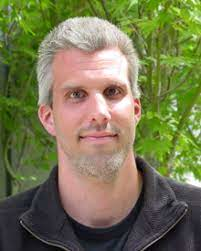
Timo Bremer
Lawrence Livermore National Laboratory
As high-intensity short-pulse lasers that can operate at high-repetition-rate (HRR) (>10 Hz) come online around the world, the high-energy-density (HED) science they enable will experience a radical paradigm shift. The >1000 increase in shot rate over today’s shot-per-hour drivers translates into dramatically faster data acquisition and more experiments, and thus the potential to significantly accelerate the advancement of HED science. However, fully realizing the potential benefits of HRR facilities requires a fundamental change in the design and execution of experiments done on them. This talk will introduce a cognitive simulation-based framework to couple traditional scientific computing with advanced data analytics, such as deep learning design to ultimately drive a high repetition laser facility with little or no human involvement. In particular the goal is to combine high-fidelity simulations with streaming experimental data to create an automatic system that, driven by the high-level scientific objective of optimizing a short-pulse laser-accelerated proton beam, continuously adapts and optimizes the experiment to provide maximal insights. Furthermore, we will develop a new generation of multi-fidelity, multi-modal surrogate models that encapsulate the knowledge of the best available pre-shot simulations and are capable of predicting, not only the traditional integrated scalar characteristics (e.g., a proton beam energy and flux), but also a full suite of synthetic diagnostics, as well as information on the internal plasma state only accessible through simulations. After describing the long term vision the talk will present recent advances in areas such as representation learning, surrogate modeling, and virtual diagnostics as discuss how these are being integrate into the ALEPH laser system at Colorado State University.
Thomas E Cowan
Helmholtz-Zentrum Dresden-Rossendorf and Technische Universität Dresden
The...

Thomas E Cowan
Helmholtz-Zentrum Dresden-Rossendorf and Technische Universität Dresden
The Helmholtz International Beamline for Extreme Fields (HIBEF), at the HED Instrument of the European XFEL, provides high intensity and high power laser drivers, high-pressure diamond anvil cells, and pulsed magnetic fields, for driving samples to extreme conditions. These are provided by an international User Consortium composed presently of HZDR, DESY, STFC-CLF, CNRS (LULI, IMPMC, and CELIA) and LANL. A formal HiBEF inauguration ceremony in August 2021 celebrated the completion of the ReLaX (“Relativistic Laser at XFEL”) system provided by HZDR, and the first year of operation of the DAC Platform provided by DESY. The CLF-provided DiPOLE D100-X system is being commissioned and will be opened for users in 2023, along with the pulsed high field magnets from HZDR.
One of the main motivations for the ReLaX laser of HiBEF was to improve our understanding of relativistic laser-solid interactions, of relevance for applications in laser-ion acceleration, ultrafast radiation sources, and isochoric heating. The present status of HiBEF, and recent progress in developing new XFEL-based techniques for studying relativistic laser-solid interactions, will be described.
Professor Takuo Okuchi
Institute for Integrated Radiation and Nuclear Science, Kyoto University
Meteorites from interplanetary space often involve dense...

Professor Takuo Okuchi
Institute for Integrated Radiation and Nuclear Science, Kyoto University
Meteorites from interplanetary space often involve dense structural polymorphs of silicate minerals as records of past hypervelocity collisions. These dense high-pressure minerals, including recently discovered species by ourselves, were all kept frozen for billions of years after experiencing the collisions. Therefore, they potentially provide us invaluable information on the history of the solar system evolution. We recently discovered the origin of one of such dense minerals by laboratory experiments, using a focused high-power laser pulse coupled with femtosecond diffractometry using an X-ray free electron laser pulse. Our results show that the structure transformation occurs through a ultrafast crystal-lattice-shearing process. We consider that such process were frequently triggered in the solar system to have frequently produced the dense minerals within a wide variety of planetary materials.
Dr. Annie Kritcher
Lawrence Livermore National Laboratory
The inertial fusion community have been working towards a burning-plasma and ignition for deca...

Dr. Annie Kritcher
Lawrence Livermore National Laboratory
The inertial fusion community have been working towards a burning-plasma and ignition for decades, since the idea of inertial confinement fusion (ICF) was first proposed by Nuckolls, et al., in 1972. In 2020-2021 a burning plasma was first reached and on August 8, 2021, the Lawson criterion for ignition was finally demonstrated in the laboratory on the National Ignition Facility (NIF) in Northern California. When the extra heating from alpha particles exceeds the heating required to initiate the fusion reactions the plasma is in a "burning plasma" state and when the alpha particle heating is greater than the initial work done on the plasma as well as the energy loss mechanisms, and for a long enough duration of time, the plasma "ignites". Experiment N210808 produced a fusion yield of 1.37 MJ from 1.9 MJ of laser energy and appears to have crossed the tipping-point of thermodynamic instability according to several ignition metrics. The “indirect” ICF approach at NIF described in this talk uses a hohlraum radiation cavity to heat and ablate the outside of a capsule that contains Deuterium-Tritium (DT) fusion fuel. This ablation causes the fuel to accelerate inward (implode) at high velocities doing work on a central lower density “hot spot” of DT fuel, increasing the temperature and density of the hot spot to the extreme conditions required for fusion. This presentation discusses the development of a platform that increased the hot-spot energy and hot-spot pressure, to achieve record ICF performance.
Thomas S. Duffy
Princeton University
Department of Geosciences and Institute of Materials
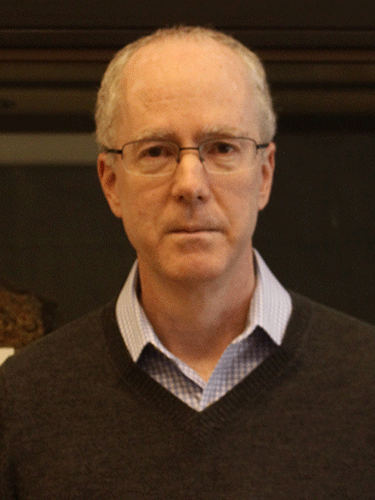
Thomas S. Duffy
Princeton University
Department of Geosciences and Institute of Materials
Dynamic compression studies of minerals have important applications to understanding planetary formation, shock metamorphism, and high-pressure phases of deep planetary interiors. Historically, measurements under in situ shock-loading conditions have been restricted to acquiring mostly continuum-level information and the lattice structure could not be determined. With the recent development of user facilities combining laser techniques for shock and ramp compression with x-ray diffraction capabilities, it is now possible to directly probe the atomic structure and observe phase transitions in real time under dynamic loading at ~10 nanosecond timescales. This talk will summarize selected results from recent studies at the Omega Laser and the National Ignition Facility (NIF). At Omega and NIF, X-ray diffraction experiments have been conducted over the range from 0.1‒1 terapascals on oxides (GeO2, SnO2), silicates (Mg2SiO4), and carbides (SiC), providing new constraints on crystal structures, equations of state, phase transitions, and kinetics at extreme conditions. The results have applications to understanding the deep interior of the Earth and rocky exoplanets.





